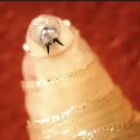The United States has confirmed its first-ever human case of the deadly New World screwworm infection. Health officials say the patient, a Maryland resident, had recently returned from El Salvador, where an outbreak is currently raging.
The Centers for Disease Control and Prevention (CDC) announced that the patient was diagnosed after complaining of severe pain and unusual wounds that would not heal. Doctors later discovered that the wounds were infested with larvae that feed on living tissue—a horrifying condition that can quickly turn fatal if not treated.
“This is a very serious infection. If untreated, the larvae can destroy vital organs and lead to death,” said Dr. Maria Gomez, a CDC infectious disease expert. “We have contained the case, but we are on high alert to prevent further spread.”
The screwworm, scientifically known as Cochliomyia hominivorax, is a parasitic fly whose larvae invade open wounds, feeding on live flesh instead of dead tissue like most maggots. Historically, the U.S. eliminated the pest in the 1960s, but outbreaks still occur in Central and South America, making returning travelers vulnerable.
To contain the risk, the U.S. Department of Agriculture (USDA) is setting up a sterile fly production facility in Texas to stop the screwworm population from spreading. The government has also temporarily banned cattle imports from Mexico, as livestock are major carriers of the parasite.
Health authorities are working with Central American health agencies to track the outbreak in El Salvador and prevent more cases from entering the U.S. Meanwhile, the CDC is urging travelers to seek immediate medical attention for strange wounds or persistent infections after visiting outbreak regions.
Experts warn that climate change and increased travel could create favorable conditions for pests like the screwworm to re-emerge in areas where they were once eradicated.
This case has sparked nationwide concern, as the U.S. has not seen any human infections for decades. However, officials assure the public that the risk remains extremely low if preventive measures are followed.



